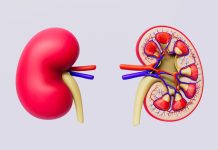
Imagine feeling thirsty all the time – no matter how much water you drink, your mouth still feels like a desert.
This relentless thirst is not just about the weather or your activity level; it could be a sign of something more profound happening in your body.
For many, this symptom is one of the early warning signs of diabetes, a condition that affects how your body processes blood sugar.
Diabetes is a metabolic disease that occurs when your blood sugar, or glucose, levels are too high. Glucose is your body’s main source of energy and comes from the food you eat. Insulin, a hormone made by the pancreas, helps glucose from food get into your cells to be used for energy.
However, with diabetes, your body either doesn’t make enough insulin or can’t effectively use the insulin it does make. This causes sugars to build up in your blood, leading to various health issues, including that unquenchable thirst.
The technical term for this excessive thirst is polydipsia, and it’s often accompanied by other symptoms such as frequent urination (polyuria) and extreme hunger (polyphagia).
These three symptoms form a classic triad that many medical professionals look for when diagnosing diabetes. But why does high blood sugar make you so thirsty?
When there’s too much glucose in your blood, your kidneys go into overdrive trying to filter and absorb the excess sugar.
If your kidneys can’t keep up, the excess sugar is excreted into your urine, dragging fluids from your tissues along with it. This triggers a cycle of dehydration, leading to the persistent thirst you can’t seem to quench.
Research evidence underscores the importance of recognizing these symptoms early. Early diagnosis and treatment of diabetes can prevent the development of more serious health complications, such as kidney damage, heart disease, vision problems, and nerve damage.
Treatment for diabetes often involves managing your blood sugar levels to prevent them from getting too high or too low. This can include taking medication or insulin, following a healthy eating plan, regular physical activity, and monitoring your blood sugar levels.
Besides the classic symptoms of thirst, frequent urination, and hunger, diabetes can manifest in other ways. Some people may experience unintended weight loss, fatigue, blurred vision, or slow-healing sores.
Type 2 diabetes, the more common type, may not show symptoms in the early stages, and symptoms can develop slowly over time.
This makes regular check-ups and blood sugar screenings crucial, especially if you have risk factors for diabetes, such as a family history of the disease, overweight, or a sedentary lifestyle.
Understanding the link between unending thirst and diabetes is vital for early detection and management of this condition.
Recognizing the early warning signs and seeking medical advice can lead to a diagnosis and treatment plan that helps manage the symptoms and prevent more serious complications.
In the world of diabetes management, knowledge is as refreshing as a glass of water on a hot day – it’s essential for maintaining your health and well-being.
If you care about diabetes, please read studies that pomace olive oil could help lower blood cholesterol, and honey could help control blood sugar.
For more information about diabetes, please see recent studies about Vitamin D that may reduce dangerous complications in diabetes and results showing plant-based protein foods may help reverse type 2 diabetes.
Copyright © 2024 Knowridge Science Report. All rights reserved.



